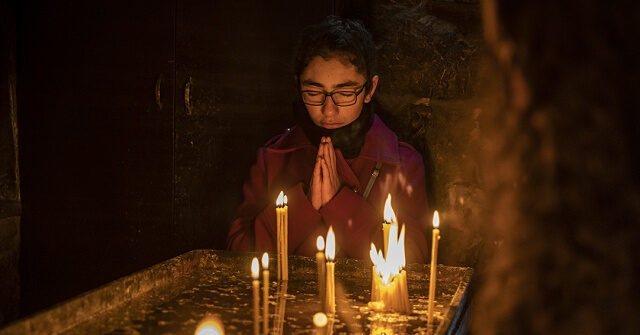The University of Munster in Germany has made a groundbreaking archaeological discovery in Armenia, unveiling one of the world’s oldest Christian churches, dating back to the 4th century. This significant find was the result of six years of excavation work at the Artaxata dig site, an area steeped in historical importance. The church’s octagonal structure, which measures approximately one hundred feet in diameter and features a floor made of mortar and terracotta tiles, showcases architectural characteristics influenced by the Eastern Mediterranean. To enhance the understanding of this site, archaeologists employed geophysical methods in their study. Collaborating with a team from the National Academy of Sciences in Armenia, they were able to confirm the church’s historical significance and influence on early Christian architecture in the region.
Artaxata holds a special place in Armenia’s history, recognized as the first nation to adopt Christianity as its state religion in 301 A.D. Despite the presence of Christian communities in Armenia dating back to around 40 A.D., the discovery of this church deepens the narrative of early Christianity’s development in the area. The Armenian Apostolic Church, largely stemming from the teachings of apostles Thaddeus and Bartholomew, has served as a cornerstone of Armenian identity and culture. The city of Artaxata, established around 176 B.C. on lands traditionally linked to the legacy of the Carthaginian general Hannibal, served as a culturally rich hub, housing diverse populations including Greeks, Jews, and Syrians.
Historically, the city of Artaxata was known for its resilience, having suffered destruction and rebuilding multiple times throughout its existence. It was captured by the Romans in 58 A.D. and underwent extensive rebuilding under orders from Emperor Nero a decade later. Over the years, several factors including military conflicts and changes in trade routes contributed to the city’s eventual decline. Although it thrived for centuries, the environmental shifts, particularly the rerouting of the Araxes River, ultimately diminished Artaxata’s prominence as a vital trade center, leaving a lasting impact on its economic and strategic status.
The early Christian narrative of Armenia is intricately linked to the role played by St. Gregory the Illuminator, who converted Armenia’s nobility to Christianity in the early 3rd century around the time of the church’s construction. His conversion efforts were met with significant resistance, leading to his imprisonment in a deep pit for 15 years. This episode contributes to the legendary status of St. Gregory, who, upon his release, managed to convert the mad king who had tortured him, catalyzing a wider Christian acceptance among the Armenian nobility and signaling a pivotal shift in the region’s religious landscape.
The newly discovered church is believed to have been constructed roughly contemporaneously with the celebrated Etchmiadzin Cathedral, the official headquarters of the Armenian Apostolic Church. While the Etchmiadzin Cathedral has been recognized as the oldest church in Armenia, this newfound site may predate it by a small margin. The discovery of the Artaxata church not only poses questions about the timelines of early Christian structures but also reinforces Armenia’s status as a significant center of early Christian worship and architectural innovation.
Professor Achim Lichtenberger of the University of Munster emphasized the importance of this find, calling it the “oldest archaeologically documented church in the country” and a remarkable testament to Armenia’s early Christian heritage. The excavation at Artaxata enriches the historical narrative of Christianity’s emergence in Armenia, unveiling a complex interplay between local traditions, foreign influences, and the broader tapestry of early Christian history. As researchers continue to uncover the layers of this ancient site, the implications of such a discovery resonate beyond archaeology, potentially reshaping understandings of early Christian practice and architectural evolution in the region.

